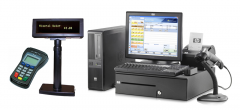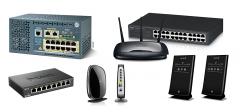Network security starts from authenticating any user, commonly (one factor authentication) with a username and a password (something you know). With two factor authentication something you have is also used (e.g. a security token or 'dongle', an ATM card, or your mobile phone), or with three factor authentication something you are is also used (e.g. a fingerprint or retinal scan). Once authenticated, a stateful firewall enforces access policies such as what services are allowed to be accessed by the network users. Though effective to prevent unauthorized access, this component fails to check potentially harmful content such as computer worms being transmitted over the network. An intrusion prevention system (IPS) helps detect and inhibit the action of such malware. An anomaly-based intrusion detection systemalso monitors network traffic for suspicious content, unexpected traffic and other anomalies to protect the network e.g. from denial of service attacks or an employee accessing files at strange times. Communication between two hosts using the network could be encrypted to maintain privacy. Individual events occurring on the network could be tracked for audit purposes and for a later high level analysis.
Honeypots, essentially decoy network-accessible resources, could be deployed in a network as surveillance and early-warning tools. Techniques used by the attackers that attempt to compromise these decoy resources are studied during and after an attack to keep an eye on new exploitation techniques. Such analysis could be used to further tighten security of the actual network being protected by the honeypot.
A useful summary of standard concepts and methods in network security is given by in the form of an extensible ontology of network security attacks.
Security Management
Security Management for networks is different for all kinds of situations. A small home or an office would only require basic security while large businesses will require high maintenance and advanced software and hardware to prevent malicious attacks from hacking and spamming.
Small Business
- A basic firewall like COMODO Internet Security or a unified threat management system.
- For Windows users, basic Antivirus software like AVG Antivirus, ESET NOD32 Antivirus, KasperSky, McAfee, or Norton AntiVirus. An anti-spyware program such as Windows Defender or Spybot would also be a good idea. There are many other types of antivirus or antispyware programs out there to be considered.
- When using a wireless connection, use a robust password. Also try and use the strongest security supported by your wireless devices, such as WPA or WPA2.
- Use passwords for all accounts.
- Have multiple account per family member. Disable the guest account (Control Panel> Administrative Tools> Computer Management> Users).
- Raise awareness about information security to children
Medium Business
- A fairly strong firewall or Unified Threat Management System
- Strong Antivirus software and Internet Security Software.
- For authentication, use strong passwords and change it on a bi-weekly/monthly basis.
- When using a wireless connection, use a robust password.
- Raise awareness about physical security to employees.
- Use an optional network analyzer or network monitor.
- It's important that company need an enlightened administrator or manager.
Large Businesses
- A strong firewall and proxy to keep unwanted people out.
- A strong Antivirus software package and Internet Security Software package.
- For authentication, use strong passwords and change it on a weekly/bi-weekly basis.
- When using a wireless connection, use a robust password.
- Exercise physical security precautions to employees.
- Prepare a network analyzer or network monitor and use it when needed.
- Implement physical security management like closed circuit television for entry areas and restricted zones.
- Security fencing to mark the company's perimeter.
- Fire extinguishers for fire-sensitive areas like server rooms and security rooms.
- Security guards can help to maximize security.
Large Government
- A strong firewall and proxy to keep unwanted people out.
- Strong Antivirus software and Internet Security Software suites.
- Strong encryption, usually with a 256 bit key.
- Whitelist authorized wireless connection, block all else.
- All network hardware is in secure zones.
- All host should be on a private network that is invisible from the outside.
- Put all servers in a DMZ, or a firewall from the outside and from the inside.
- Security fencing to mark perimeter and set wireless range to this.
Shrih Technologies Security Services support the enterprises to deploy, operate, and optimize network platforms that defend critical business processes against attack and disruption, protect privacy, and support policy and regulatory compliance controls.










